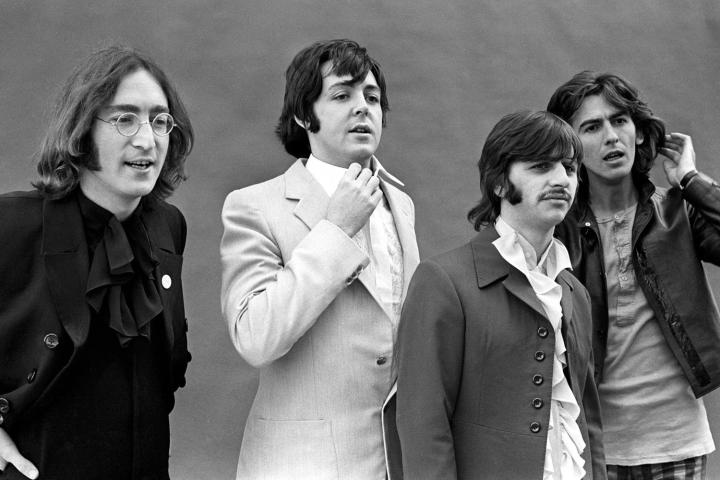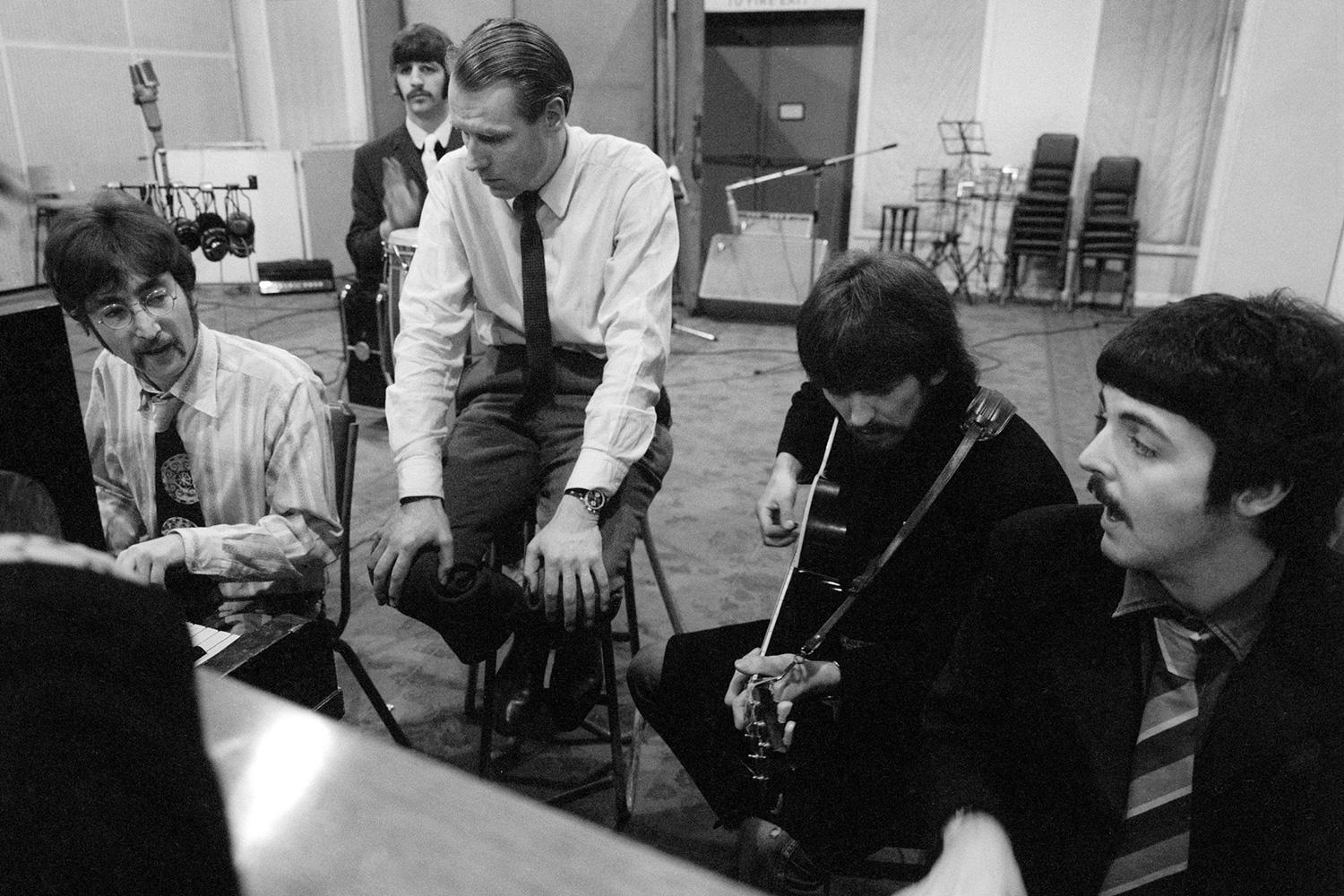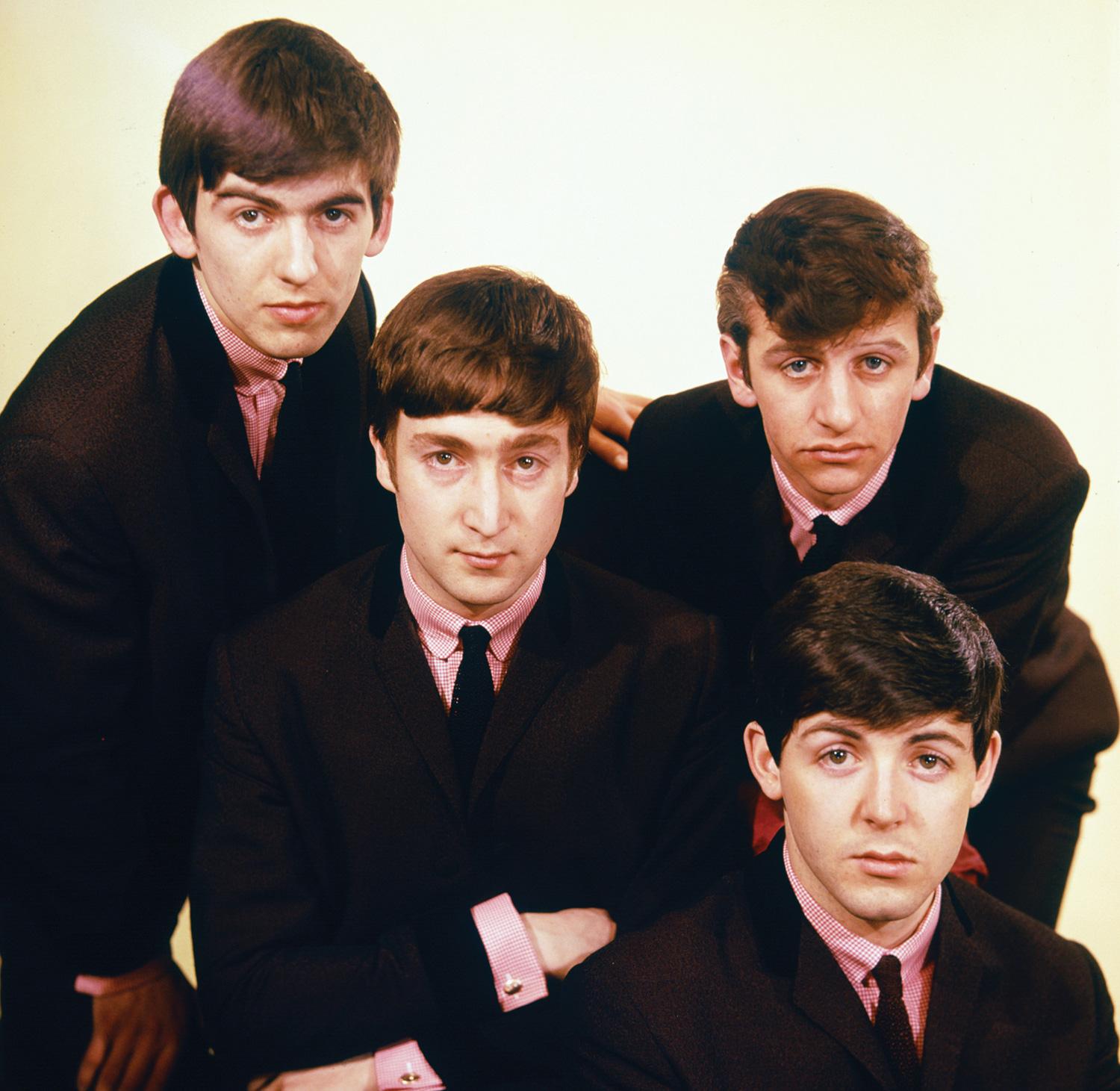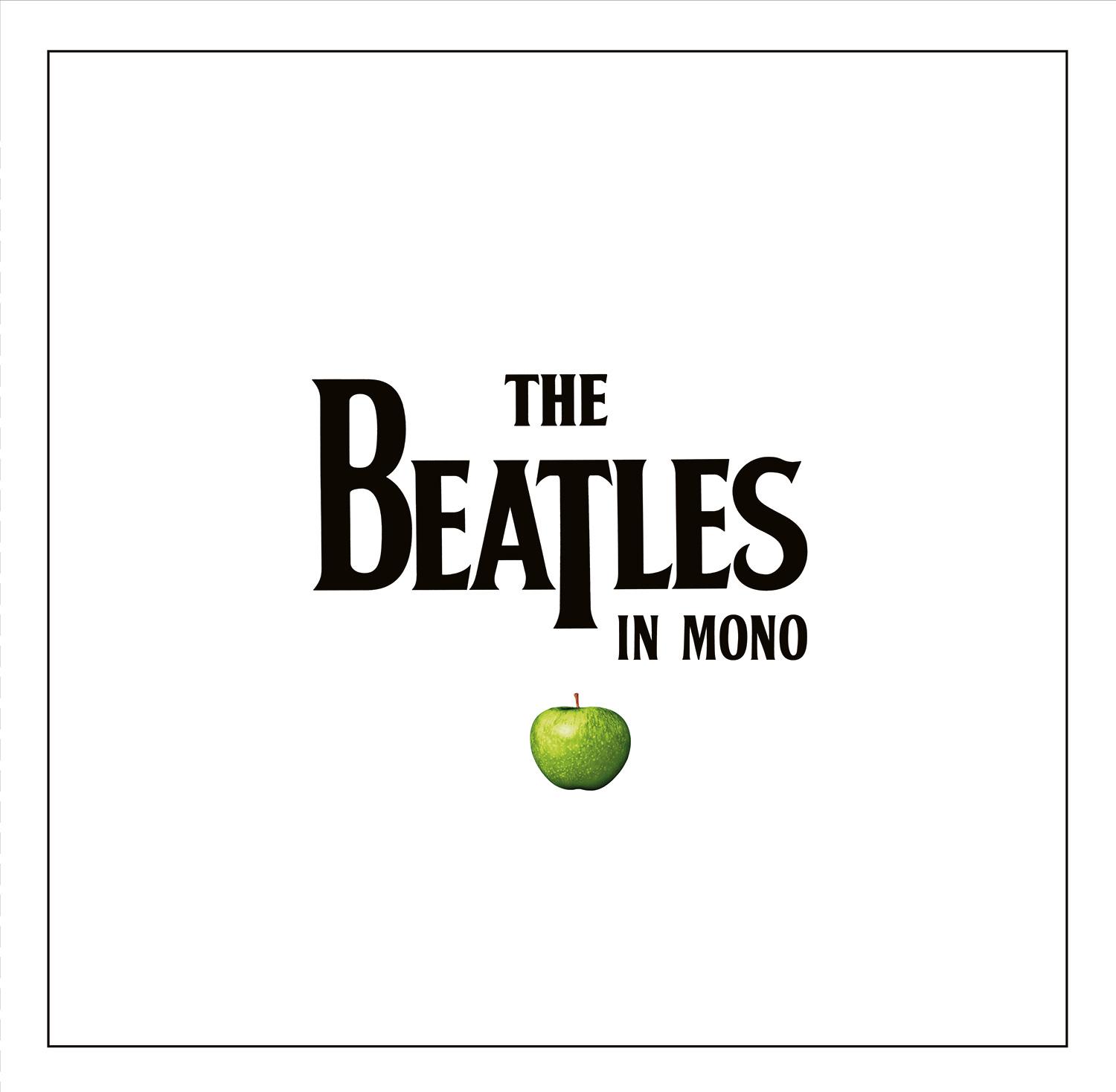
The A to Berkowitz’s Q is really simple, according to Mono mastering engineer Sean Magee.
You want to hear The Beatles without the extra distortion you’d get from cutting it loud.
I can attest to that assessment personally, having listened to each LP on an $80,000 McIntosh system at Electric Lady Studios in New York as well as on my own home reference system. The clarity and detail evident in tracks that I’ve listened to hundreds, if not thousands, of times — A Day in the Life (the telltale chair squeak during the orchestral buildup), Within You Without You (the seamless sitar-percussion tandem), Rain (that insistent bass line), and Tomorrow Never Knows (the seagull-squalling backwards guitars) — is remarkable.
Magee and Berkowitz sat together with Digital Trends in the green room at Electric Lady for an exclusive discussion about dealing with “sticky edits,” pushing the distortion envelope in the studio, and what it’s like to hold the original Sgt. Pepper tape in your hands.
Digital Trends: Do you feel that The Beatles in Mono vinyl box is a Holy Grail kind of release?
Sean Magee: I suppose so. The Monos are the ones that are the most interesting, more than the Stereo ones, I think. In the ’60s, they were made for the target audience that listened to them, at home and on the radio. So you say, “Well, that’s what we have to pay attention to.” And that’s what they had to say to the record company at the time: “That’s what we’re going for. The stereo versions — well, we’ll do those later.”
Most of the original tapes you worked with were in decent shape, but there was one you said the glue was an issue for: Please Please Me [originally released in March 1963].
Magee: The glue wasn’t coming off the tape itself; there was no oxide loss. There were sticky edits, really. The glue had seeped, over time, to the various layers of the editing tape, so there was a sticky film across everything. We had clean tape we used to parse very gently over that, but it didn’t really help here. It was leaving a film on the heads.

Two possibilities there: One, the head gets gummed up when you’re playing it, and the top end disappears. And/or you start to have friction, so you start to take the oxide off. We’re not going to do that. The oxide needs to stay on the plastic. We’re doing the cutting with the advanced head machine, so it has a longer tape path, which has got to go through several loops to create a delay, and that puts a lot more tension on the tape. Edits will break, and that’s actually adding to it as well.
The thought was it’s actually more sensible to transfer it a track at a time to another tape, a new tape, and then stick it all together for a new cutting master. And we used that to finish this project.
Did you have any level-matching problems with the earlier albums?
Magee: No, there were various level changes that were done on original cuts like +1 or +2 dB here and there, so we did the same. The only thing we haven’t done volume-wise is match them to the original cuts. There didn’t seem to be any point in doing that. We’re not trying to compete. It doesn’t have to be the loudest thing in anybody’s collection. You want to hear The Beatles without the extra distortion you’d get from cutting it loud. We’re not battling against bad signal-to-noise either. The ability of pressing plants to deliver nice, flat, quiet plates is considerably better nowadays.
Working on The Beatles in Mono has been a privilege and a dream come true.
Magee: Yes! You wouldn’t believe how much surface noise I was listening to with the original LPs. Another problem was the record sides were getting longer and longer. And when the sides keep getting longer, the difference between signal and noise begins to get quite apparent.
Earlier, you told Steve that you love Dr. Robert. Tell me why it’s your favorite Beatles cut.
Magee: It’s one of the only tracks I put on where I keep wanting to turn it up louder. That’s always a good sign. It’s got a great groove to it. And I also love Revolution 9. I don’t care what anybody says about it. It’s the most amazing thing.
Steve, if Dr. Robert is Sean’s favorite, what’s yours?
Berkowitz: I had an emotional and psychological moment listening to Yesterday when I was sitting at Sean’s board at Abbey Road. The tape is moving and I look out the window, and I see the roof. And then the strings come in and I go (whispers), “Wow.”
I love the clarity of the guitar strings being strummed by Paul during the intro.
Magee: You can also hear the slight misplaying there, some of the wrong-fretting of the strings.
Berkowitz: It’s just like Michelle, because they both also have slightly distorted vocals.
Magee: And you can hear the wood of the guitar. It sounds like (pauses) a piece of wood!

Ah yes, that rare thing — the real sound of what it’s like when an actual person plays an actual instrument.
Berkowitz: And we get the brilliance George Martin and the engineers had in placing the mikes on those strings, and how beautiful the strings are in space. I can’t say it’s my favorite, but I’m struck, each time I hear Yesterday. I had it on 45, I’ve had it forever! I teared up when Sean put the tape up and we were listening to it.
Magee: The tape shown playing in the EPK is Sgt. Pepper, and the guy who was filming it and monitoring the sound almost went to pieces when we played that for him. He picked up the tape, and then he held it up. He could smell it. “Yeah, it’s got the smell of tape.” Yeah, that’s the tape. The Beatles’ energy is there.
That tape is like a magic talisman that you get to hold, if only briefly.
Berkowitz: The first week at Abbey Road, after we went through the records themselves, a security guy brought the tapes up from the downstairs vault. He walked in and put this box in my lap. It was nine albums — nine Beatles album, the mono masters. It was like, “Here are nine Picassos! Here are the Vermeers!” Anyway, I picked up each one. I could have spent several hours looking and smelling and touching and going over the notes. It’s an astounding thing.
There’s an amazing period where things goes from making and manufacturing “product” to the “art and craft” of mastering
Berkowitz: Whenever we left his studio, the door had to be locked.
Magee: I have the only key to get in there.
Steve made a point about the inner-groove distortion that can happen with tracks that are in the center of the groove, like Twist and Shout [the last track on Side 2 of Please Please Me]. What happens if you don’t pay attention to that during the mastering stage?
Magee: You’d lose the top end. There’s more high frequency. It’s very physics-based. The nearer the center you get, depending on how accurate and fine your stylus is, you get a phenomenon called inner-groove distortion. It’s a bit complicated. Usually, the oscillation is to your music. The nearer the center you get, the frequency stays the same but the wavelength changes, so the force required to send your stylus from there to there is much greater. When you get to a point where your stylus tracking hasn’t got the momentum and the force required is too great to send it left and right, then it doesn’t track.
Was there anything you needed to be mindful of compensating for?
Magee: The biggest thing we did to compensate for was to not worry about how loud the cuts were. And like I said earlier, there was no competition to be had. These are historical documents, and they don’t need to be competing with anything “new.”
You’re right. These are historical documents, and the goal was to get them as accurate as the creator and producer intended them. But the mentality of the engineers working on them sure shifted during those years [1963-69]. In the early days, artists weren’t even “allowed” to make distortion in the studio.

Magee: Please Please Me was sent back. The guy who ran the cutting department went, “No, this is far too much progression, far too much on the levels to cut on the lacquers. Please do it again.” It was a handwritten note by Mr. Horace Hack. [Hack was the manager of the mastering department at Abbey Road.] He was the bane of the studio engineers. He didn’t have time for them.
Berkowitz: There’s an amazing period where things goes from making and manufacturing “product” to the “art and craft” of mastering, which changed in the middle of when The Beatles were recording.
At some point there had to be a mentality shift of the people working the machines — from the fact that they weren’t allowed to do it to having their minds opened up to thinking, “Oh, we can actually do these things now.”
Magee: EQ in those days was mainly to cure problems you may have in cutting. As the mastering engineer, you went, “Well, I’m going to make this sound like this.” And this sounds like this because that’s the way it was.
The Beatles and all their friends were going, “Come and check this guy out.”
Berkowitz: No, I would say they were creating a “manufacturing part.” They were not really part of the audio process except to cure any ills they might have when trying to properly make a manufacturing part.
And you could argue that may have stifled the creativity of the artists’ early work because this was “the way it was.”
Magee: It was done in studios. The studios even banded the tape and the decks together — everything. The cutting engineer would adjust the levels to make them even, and if necessary, would have applied EQ to make sure the cut was as loud as possible, or cure sibilance problems.
I think Rubber Soul [released December 1965] is a very good example of where creative EQ was used to cure some tracks that were inherently “dull” — in audio terms, that means they were muffled. Some tracks had some rather extreme EQ, though I can’t exactly remember which ones. There was extra EQ added to get extra twang out of whatever instrument it is. It was one with a sitar.
I think of the intro to a track like I Feel Fine [a November 1964 single that can be found in the box set on Side 2 of Mono Masters, a three-LP compilation of B-sides and singles (the album is also available separately)]. No way that distortion would have been allowed to happen 2 years prior.
Berkowitz: Yeah! I’m playing in a band by then myself, and we’re going, “They’re using distortion! They’re using it!” And then of course The Yardbirds come, and everything changes again! (all laugh)

And then there’s John Mayall and the BluesBreakers With Eric Clapton [released July 1966] — the kind of things Eric is doing on guitar on Hideaway would never have flown earlier.
Magee: And then there’s Jimi Hendrix. The Beatles and all their friends were going, “Come and check this guy out.” What the fuck was this man doing? Unbelievable.
So the phrase “Mono Masters” applies in many ways here. It’s not just those LPs, but also the people who made them — The Beatles — and the people on the back end, which is you guys.
Magee: I’ll take that. But without the guys who made it, the tape is just plastic and dusty. We just did the end part of the steps.
Berkowitz: The moment of creation is where it all begins. We’ve been fortunate enough here to touch the moment of creation, and help it to come back out again for the journey that it’s going to take from studio to consumer. I hope I don’t ever get over that feeling or lose the seriousness of the task that we’ve been trusted with. Working on The Beatles in Mono has been a privilege and a dream come true.


